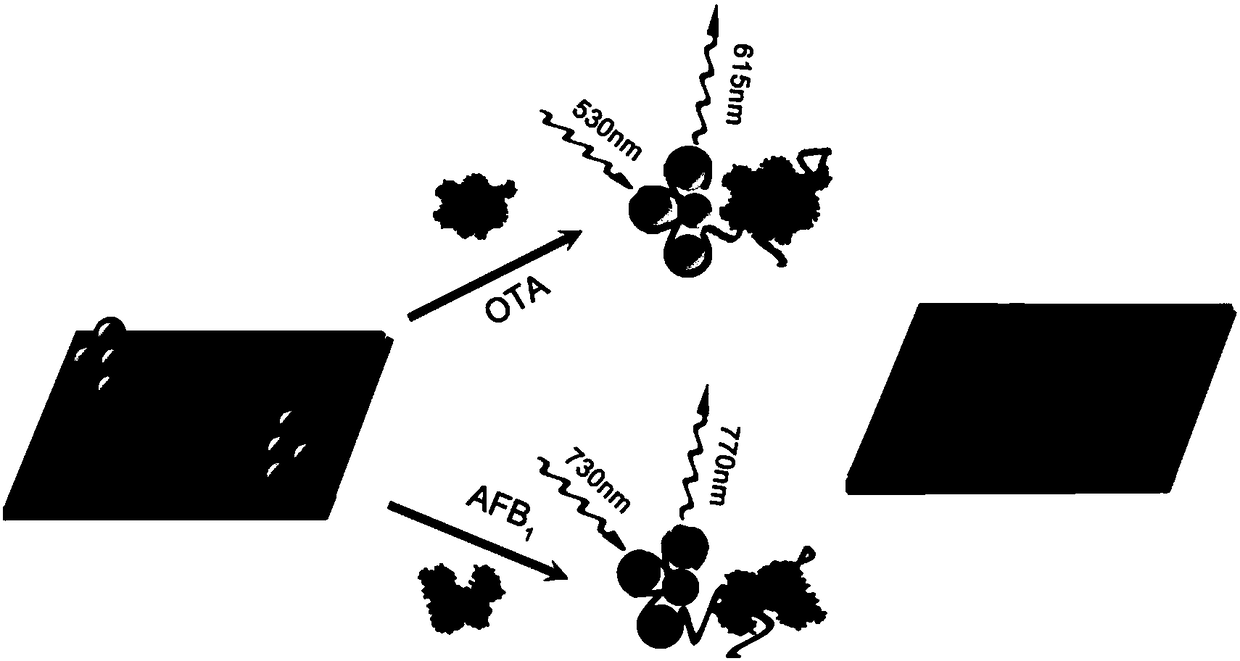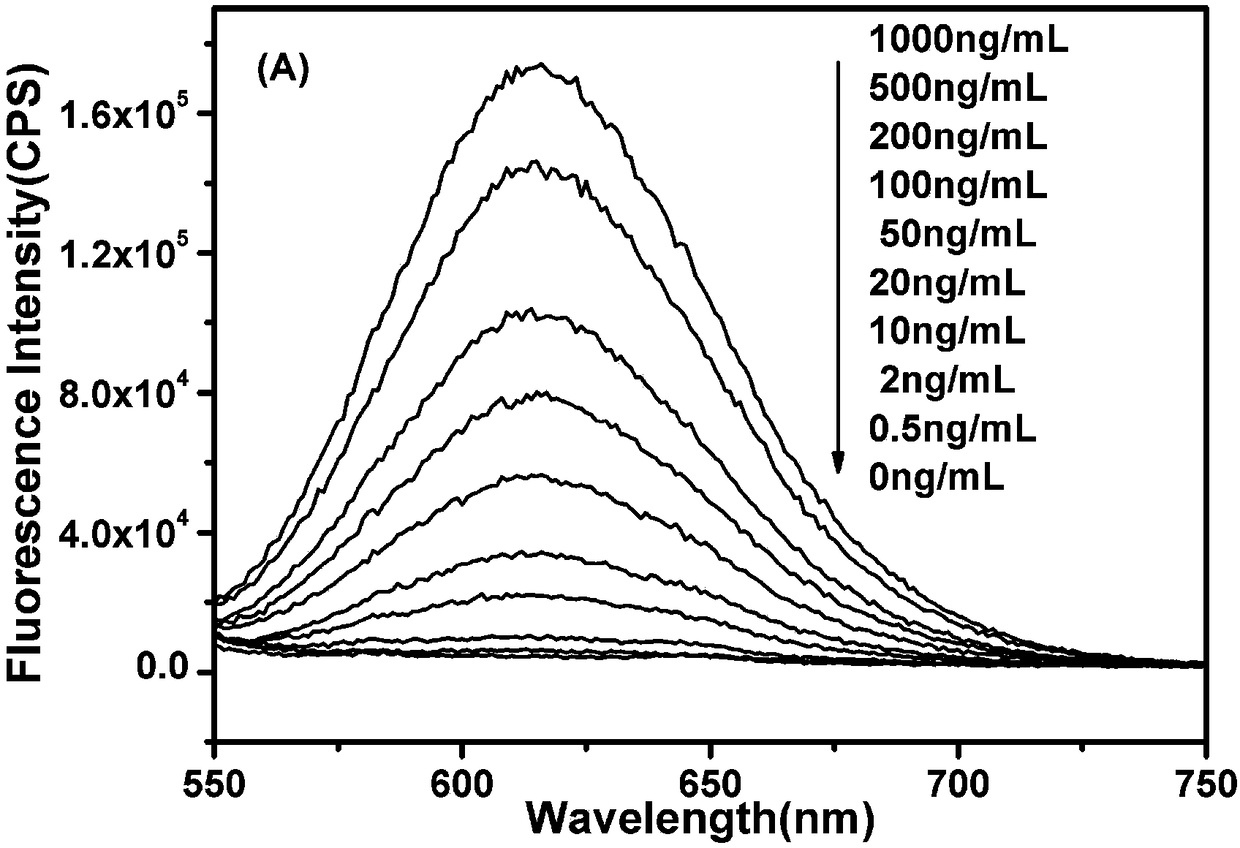Fluorescent silver nanometer cluster with stable nucleic acid, and preparation method and application thereof to toxin detection
A silver nanocluster, fluorescence technology, applied in nanotechnology, nanotechnology, nano-optics and other directions, can solve the problems of long time and high cost, and achieve the effect of simple operation, short time consumption and high sensitivity
- Summary
- Abstract
- Description
- Claims
- Application Information
AI Technical Summary
Problems solved by technology
Method used
Image
Examples
Embodiment 1
[0045] Example 1: Preparation of AgNCs emitting infrared light and its application in biosensors
[0046] (1) Synthesis of DNA-stabilized AgNCs emitting infrared light
[0047] Preparation of fluorescent silver nanoparticles: the single chain concentration in the system is 1.5 μM. In the total reaction system, add 10mMPBS buffer solution, the signal probe P5 required for the synthesized infrared-emitting AgNCs prepared in advance, and an appropriate concentration of silver nitrate solution, mix for 30s and rest for 15 minutes, then add an appropriate concentration of The sodium borohydride solution was mixed evenly, and after reacting for 12 hours under the condition of avoiding light, it was placed in the refrigerator for later use.
[0048] (2) Using DNA-stabilized infrared-emitting AgNCs as fluorescent probes to analyze OTA toxins in food
[0049] In the total reaction system, add 20 μL of the above solution of AgNCs that emits infrared light, 100 μL of buffer solution, a...
Embodiment 2
[0051] Example 2: Preparation of AgNCs emitting near-infrared light and its application in biosensors
[0052] (1) Synthesis of DNA-stabilized AgNCs emitting near-infrared light
[0053] Preparation of fluorescent silver nanoparticles: the single chain concentration in the system is 1.5 μM. In the total reaction system, add 10mMPBS buffer solution, the prepared signal probe P5 required by the synthesized AgNCs that emit near-infrared light, and an appropriate concentration of silver nitrate solution. The sodium borohydride solution was mixed evenly, and after reacting for 12 hours under the condition of avoiding light, it was placed in the refrigerator for later use.
[0054] (2) DNA-stabilized near-infrared-emitting AgNCs were used as fluorescent probes to analyze AFB1 toxin in food
[0055] In the total reaction system, add 20 μL of the above solution of AgNCs emitting near-infrared light, 100 μL of buffer solution, and an appropriate amount of WS 2 , an appropriate amoun...
Embodiment 3
[0057] Example 3: AgNCs that emit infrared light and AgNCs that emit near-infrared light are applied to biosensors at the same time
[0058] (1) Synthesis of DNA-stabilized AgNCs
[0059] Preparation of silver nanoparticles emitting near-infrared light: the single-chain concentration in the system is 1.5 μM. In the total reaction system, add 10mMPBS buffer solution, the signal probe P6 required by the synthesized near-infrared-emitting AgNCs prepared in advance, and an appropriate concentration of silver nitrate solution, mix for 30s and rest for 15 minutes, then add an appropriate concentration The sodium borohydride solution was mixed evenly, and after reacting for 12 hours under the condition of avoiding light, it was placed in the refrigerator for later use.
[0060] Preparation of silver nanoparticles emitting infrared light: the single chain concentration in the system is 1.5 μM. In the total reaction system, add 10mM PBS buffer solution, the signal probe P5 required f...
PUM
 Login to View More
Login to View More Abstract
Description
Claims
Application Information
 Login to View More
Login to View More - R&D
- Intellectual Property
- Life Sciences
- Materials
- Tech Scout
- Unparalleled Data Quality
- Higher Quality Content
- 60% Fewer Hallucinations
Browse by: Latest US Patents, China's latest patents, Technical Efficacy Thesaurus, Application Domain, Technology Topic, Popular Technical Reports.
© 2025 PatSnap. All rights reserved.Legal|Privacy policy|Modern Slavery Act Transparency Statement|Sitemap|About US| Contact US: help@patsnap.com



